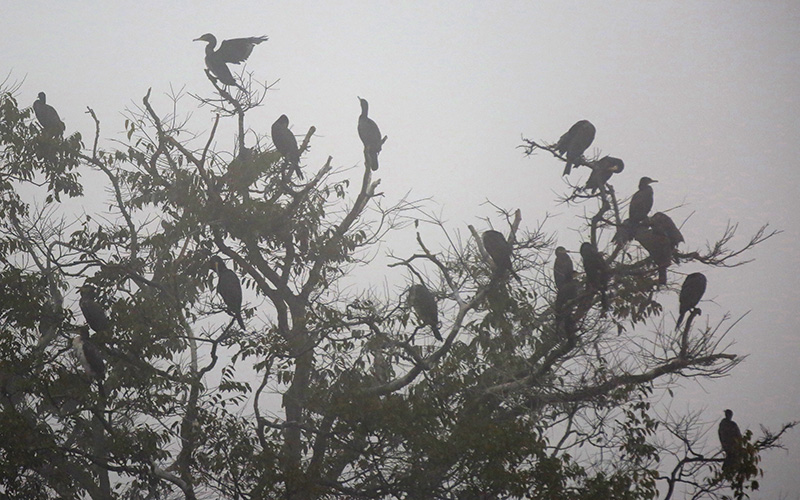Migratory birds decline due to food, habitat loss
Lakes and ponds in urban areas should be preserved to attract migratory birds
Kathmandu, December 22
Every year various species of winter migratory birds arrive in Nepal travelling thousands of kilometres to escape extreme cold of the northern hemisphere. However, with increasing urbanisation of the country, the number of migratory birds could sharply decline in the future, warn bird experts.
Ornithologists said the number of various species of birds migrating to Nepal has decreased by more than three folds in the past 15 to 20 years. Ornithologist Hem Sagar Baral said, “In the past few years we have recorded around 150 species of winter migratory birds, which is a sharp decline as we used to count 500 to 600 species of such birds during the early 2000s.”Of the 150 species of winter migratory birds, ornithologist have recorded around 70 species of the birds inside Kathmandu valley.
These birds are found mostly around wetland areas, including Bagmati corridor of Chovar and Taudaha of Kathmandu valley.
Of late, Chovar and Taudaha, favourite habitats of the migratory birds have been undergoing rapid urbanisation and the lake in Taudaha has been surrounded by restaurants and other recreational centres.
Ramesh Chaudhary, executive member of Birds Conservation Nepal said, “If pollution and rapid urbanisation of Chovar area continues unchecked we might not see migratory birds in the near future.” He said the government should remove restaurants from around the lake area and clear the lake of invasive weeds and prevent construction of concrete structures around the lake to attract the birds.
Rapid urbanisation, unplanned settlement, loss of wet land, use of lakes and water resource for recreational purpose have been identified as key reasons for declining numbers of migratory birds in the country.
These factors have led to habitat loss and shortage of food for the birds, according to bird experts. Baral, who is also Nepal’s Country Director for Zoological Society of London said apart from preserving urban lakes and ponds, open spaces used for agriculture should also be preserved as majority of the migratory birds fed on insects and grains produced in the fields and chose them for resting. “Farmers choosing cash crop over regular grains is also likely to have adverse impact on such birds in coming years,” he said.
Most of the birds that migrate to Nepal belong to duck species like common teal, common pochard, mallard, ruddy shelduck, gadwall, red-crested pochard, tusked duck and eurasian teal.
Greenshank, thrush, flycatcher, booted eagle, steppe eagle, eastern imperial eagle, great spotted steppe and cinereous vulture are other migratory birds that come to Nepal during winter. Eurasian koel, Asian koel, Indian cuckoo, emerald cuckoo, oriental cuckoo, pied cuckoo and lesser cuckoo are also common winter migratory birds in Nepal.
According to ornithologists, some of these birds fly up to 9,375 metres and weigh up to 9.5 kg.
Ornithologist this year also recorded a rare bird called Dunlin inside Kathmandu valley after many years. BCN, which claimed to have seen the bird, however has kept the location secret to prevent overcrowding of the area by bird watchers.
Most of Nepal’s winter migratory birds come from China, Mongolia, Korea, Siberian region of Russia and central Asia. Mid-September to late October is considered the peak migration time for such birds.






